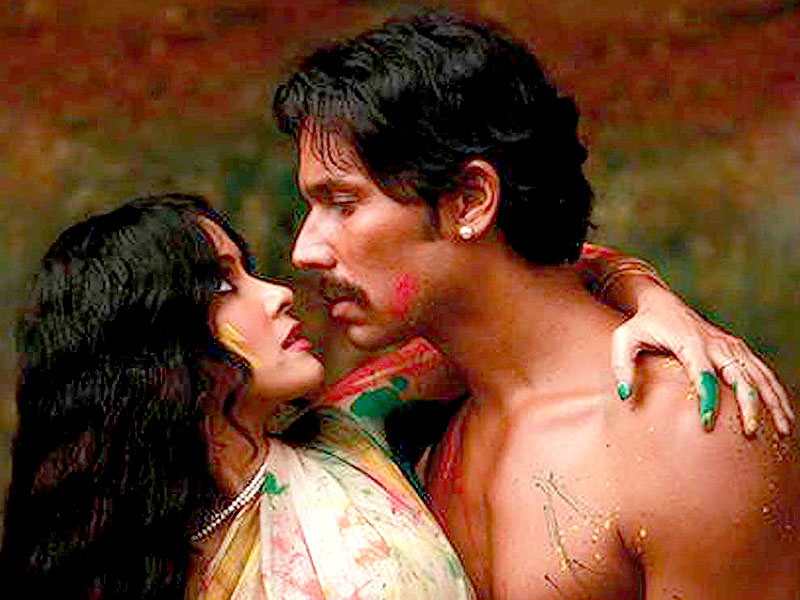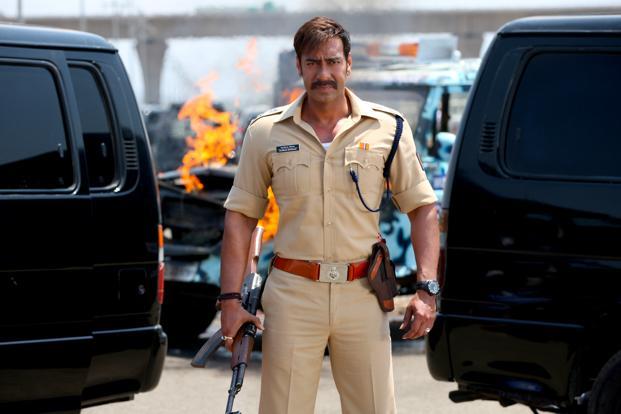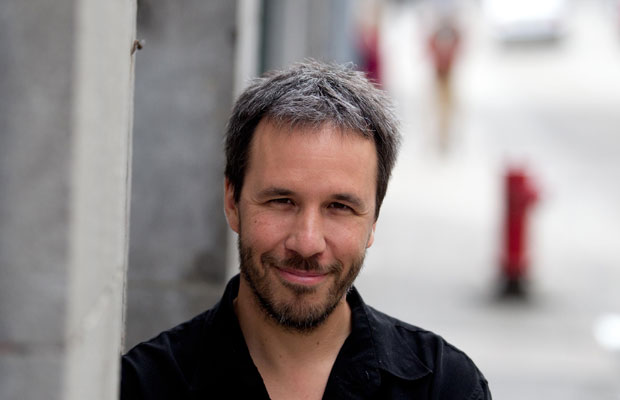
Rang Rasiya review: The Randeep Hooda-starrer is much more than a period film
Film: Rang Rasiya
Cast: Randeep Hooda, Nandana Sen, Darshan Jariwala
Director: Ketan Mehta
Rating: 3.5/5
French filmmaker Robert Bresson once said, “In the nude, all that is not beautiful is obscene.”
Many Indian filmmakers would have read this quote and watched his films, but rarely did they think of implementing it in its actual sense. But, Ketan Mehta is not one of them, as his Rang Rasiya is indeed about the colours of passion.
The film, which claims to be based on Ranjit Desai’s biography of renowned painter Raja Ravi Varma, is a journey where souls get undressed and nakedness finds a new purpose.
Ravi Varma (Randeep Hooda), who is married to a princess, is more inclined towards the colour palette than worldly duties. His family doesn’t approve of it and thus he becomes a rebel, who starts finding solace in his paintings. This leads to trouble and he has to leave home in order to preserve his art and philosophy.
All this is happening in late 19th century, a time when the peaceful co-existence of religion, science and art was probably not possible. After being patronised by the king of Travancore, Ravi Varma begins to give a new dimension to his art, but the demise of the king leaves him in a lurch. Now, the princely estate of Baroda appoints Raja Ravi Varma as its chief artiste and there begins a journey which continues till his last days.
A face of defiance, Raja Ravi Varma becomes the painter who snatches the Hindu gods out of the clutches of upper caste priests and makes them a household figure irrespective of caste, creed and individual identity of the followers. But, this isn’t as easy as it sounds. His ‘colourful’ character gives birth to many stories and some of them will cost him dearly in the court of law, where he is accused of profanity and blasphemy.
The narrative begins with an attack on an art gallery, where Raja Ravi Varma’s paintings are getting auctioned. It’s such an apt opening for a film based on the life of a painter, whose sole motive in life was to defy illogical norms.
After a great opening sequence, Rang Rasiya becomes a love story which exists in Sugandha’s (Nandana Sen) heart and Ravi Varma’s mind. The two swans keep floating in the pond of love, literally, before clashes begin among the age-old theories of anarchy, revolution and personal salvation.
Ketan Mehta has amalgamated the essence of love quite aesthetically. A particular sequence, which also got the makers into trouble, is filmed in a beautiful way. It’s the portrayal of the ancient story of Pururava and Urvashi through Sugandha and Ravi Varma. Hindi cinema has taken a brave foot forward in Rang Rasiya, as it features frontal nudity, but there would hardly be any eyebrows raised or heads hanged in shame. This sequence is tenderly designed, amazingly shot, fantastically edited and gently eased off. It’s vibrant, touching and stirring.
But, the film has much more than just this sequence. The idea of making a film on Ravi Varma is compelling in itself. After all, he is the artist who gave face to gods on cheap posters and in a way made them available for all. Wasn’t this the highest form of social service? The posters with Hindu gods and goddesses that we purchase from market today were first conceived by him. He acted as the bridge between the deities and their worshippers, to say the least.
The film’s screenplay has been kept simple and it works because it doesn’t have complex scenes and maintains the right pace.
During the court room battle in the film, the magistrate, played by an ever-charming Tom Alter, very teasingly asks Ravi Varma, “Mr Varma, aap kanoon ke baare me kitna jaante hain,” and the man replies, “Utna hi jitna aap kala ke baare me jaante hain.” This statement is the backbone of the narrative.
In another moving scene, Kamini (Rashaana Shah), an untouchable, grabs Ravi Varma by hand and takes him to a place, where her community members are worshipping the poster designed by Varma as they were not allowed inside temples. She says, “Aap bhagwan ko bahar le aaye.” This dialogue is the philosophy behind the story.
During the dramatic climax, one of the loopholes of an otherwise fantastic story is when Ravi Varma says, “Jeevan ka uddaishya hai kala se sundar hona.” This is the resolution of the film.
No complicated dialogues and greater focus on the environment than the protagonist supplement for the correct feel. Yes, one can easily spot the problems with accents and over acting on part of secondary characters, but the premise has been laid in a manner which covers up for small glitches.
Though the attention is on the three-act structure than the hero, Randeep Hooda emerges as the real strength of Rang Rasiya. He is intense, jovial, blind in passion, untrustworthy, self righteous, a genius and a fighter and selfless, all at the same time. In one scene, he scolds Sugandha for being a fool in love. He is so effortless yet so influential in it that any director would fall for his mood transitions. Probably this is his best performance till date, and it’s going to be difficult for him to match up to Rang Rasiya again.
Nandana Sen looks divine, elegant and enticing. She does justice to her role and doesn’t look vulgar or out of place in that hugely publicised love-making scene. On the other hand, she makes it appear graceful and prevents the plan from backfiring.
Ketan Mehta has done a commendable job as Rang Rasiya is far ahead of its contemporaries, which are still dealing with insane item numbers and illogical heists.
Rang Rasiya is much more than just a period film. It’s a statement on behalf of people who reject intolerance and are continuously striving for a new India which will give space to free voice. It’s a piece of art.
Review by: Rohit Vatas Posted on: Hindustantimes











